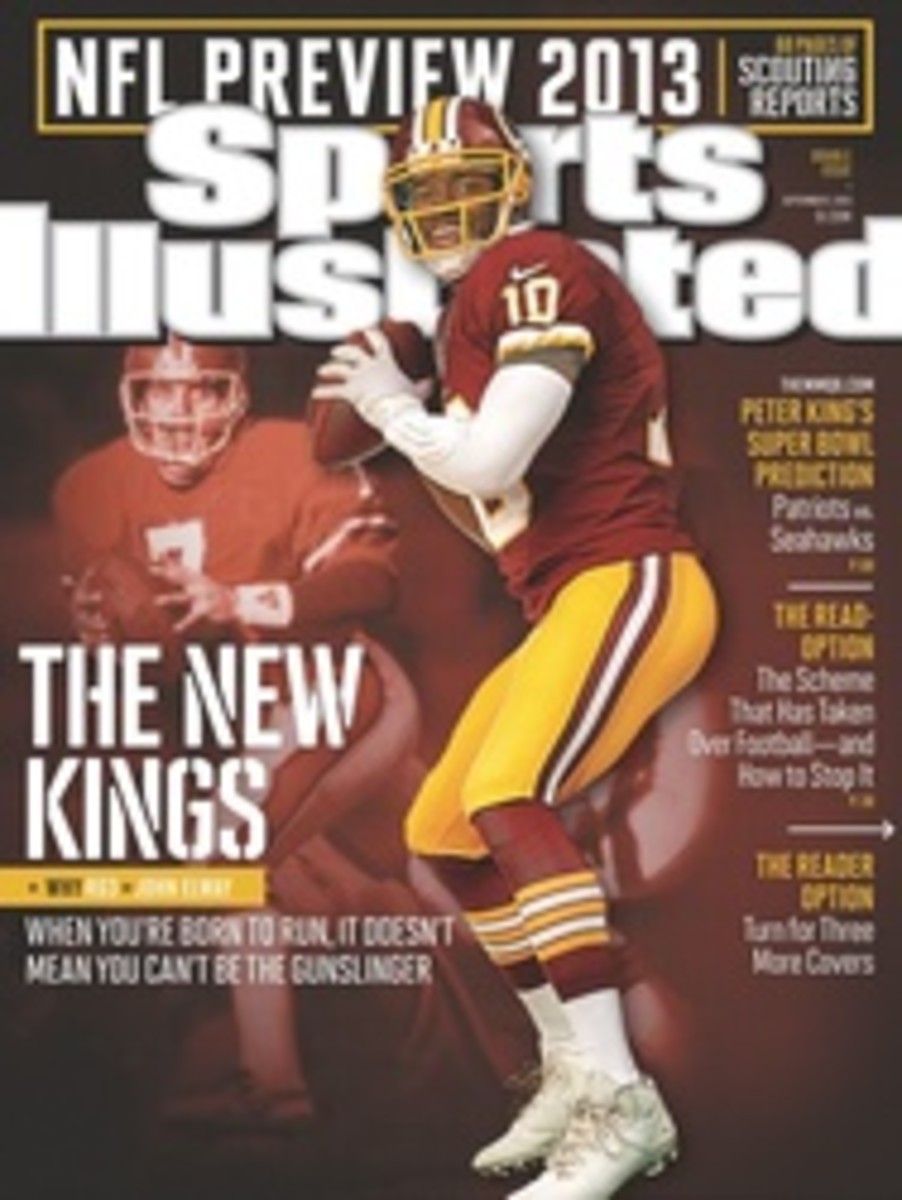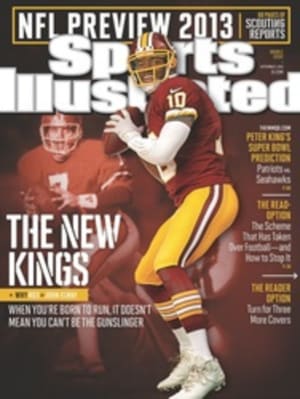
1 New England PATRIOTS
Tom Brady won three Super Bowls in his first four seasons as a starting quarterback; he's a two-time league and Super Bowl MVP; and he has a better than four-to-one touchdown-to-interception ratio since 2007.
Now 36 and entering his 14th season, Brady may be facing the biggest challenge of his NFL career. At a time when most teams are trying to keep their franchise quarterbacks viable by importing high-priced talent, the Patriots are staring at a less than desirable reboot of their passing game.
Brady will likely start the season without his top four pass catchers from a year ago. Wes Welker, one of Brady's best friends and the first NFL receiver with five 100-catch seasons, is now hauling in passes from Peyton Manning. Brandon Lloyd was released in March and is looking for his seventh team in 10 years. Rob Gronkowski is recovering from arm and back surgeries and could miss the start of the season. And, of course, Aaron Hernandez is in jail, charged with first-degree murder in the death of Odin Lloyd.
The Pats did go through a changing of the guard in 2006, when their top two receivers, Deion Branch (trade) and David Givens (free agency), departed. But Brady had tight end Benjamin Watson, running back Kevin Faulk and receiver Troy Brown in his back pocket to pick up the slack then.
Now, Julian Edelman (21 catches in 2012), Shane Vereen (eight) and Stevan Ridley (six) are New England's only significant holdovers for the opener against the Bills.
Even before the receiving corps's mass exodus, a major tweaking of the Patriots' passing offense was in the works. In their last five postseason losses, dating back to a 17--14 loss to the Giants in Super Bowl XLII, the Pats averaged only 15.8 points after averaging 32.6 points in those five regular seasons. Coach Bill Belichick could no longer deny that in the biggest games and against the best defenses, the Patriots failed to get it done offensively. In Welker, Gronkowski and Hernandez the Patriots had three of the most prolific targets in the game. But they all did their best work in the middle of the field. Without viable targets on the outside to shift coverage, they could be slowed up by clogging the middle.
New England replaced the 32-year-old Welker with the Rams' Danny Amendola, who's 27. The new slot receiver, who is often compared with Welker, has battled injuries the past two seasons, but when he's on the field, Amendola is more athletic and can be effective both inside and outside.
The Patriots also took two receivers in this year's draft (the first time since 2002), selecting Aaron Dobson, an athletic boundary receiver, and Josh Boyce, who runs an extensive route tree. None of the eight wideouts drafted by the Pats since '02 have become starters in the NFL. The Patriots have had so many draft and free-agent busts (e.g., flameouts Chad Ochocinco and Joey Galloway) at wide receiver in large part because of their complex playbook and Brady's style of play. With countless pre- and postsnap adjustments built into every pass route, a receiver has to be able to see each play just as the QB does.
"You need to think fast and communicate well," says Brady. "Everyone's got to be on the same page, so it's hard to slow down something for one person. It takes really smart football players to be in this system. Guys that have done well have been smart players who can adjust quickly."
Amendola seemingly fits the bill and has quickly connected with Brady on the field. So have receiver Kenbrell Thompkins and tight end Zach Sudfeld. Both were undrafted free agents this spring, but they quickly showed the size, speed, smarts and hands to become the first to contribute of the rookie pass catchers.
The Patriots' passing game, with coordinator Josh McDaniels back in charge, is evolving out of necessity. It's not the normal course of action with a veteran QB like Brady, but if he can make it work, the Patriots could end up with a passing offense that, for the first time since 2007, has to be defended in all areas of the field. And that can be the difference in this year's playoff run.
THE CASE FOR ...
Running back Shane Vereen
A player with 308 rushing yards and eight catches in his first two seasons might not be the first person you think of as being a secret weapon for the powerful Patriots, but Vereen should be just that. A second-round pick out of Cal in 2011, his career barely got off the ground after a balky hamstring limited him to five games as a rookie. But two TDs last season showed Vereen's potential: an 83-yard wheel route in which he outran the entire Jets D and a 33-yard over-the-shoulder grab in a playoff win over the Texans. With RB Danny Woodhead and TE Aaron Hernandez gone, the job of Swiss Army knife in the Pats' offense falls to Vereen. A tad thin at 5' 10" and 210 pounds when he entered the league, Vereen added muscle this off-season, making him more resilient on runs between the tackles. And yet he hasn't lost any of his 4.49-second 40 speed. He also remains one of the team's most natural pass catchers. Previously, Hernandez gave the Patriots' no-huddle attack an edge because he could play running back, receiver or tight end, meaning that New England didn't have to slow down to change personnel. Now, Vereen can be deployed in the same way.
SINCE YOU'VE BEEN GONE
(N) NEW ACQUISITION
PHOTO
CHARLES KRUPA/AP
WR DANNY AMENDOLA
PHOTO
DAVID BERGMAN FOR SPORTS ILLUSTRATED

